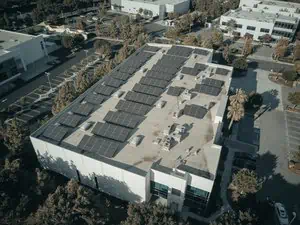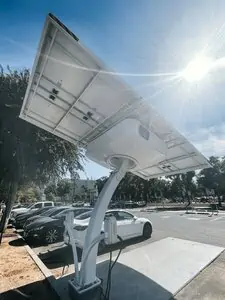Yesterday the Inflation Reduction Act was signed into law and President Biden and his team will now travel across the country to highlight how the bill will help Americans. The long-time-coming Bill is a slimmed-down version of the previously proposed Build Back Better Legislation, with the intent to lower prescription drug costs, support the energy transition, raise taxes on some billion-dollar corporations and reduce the federal deficit. While the name of the bill is marketing genius to get it across the line, there doesn’t seem to be a whole lot of focus on inflation reduction, but there is extensive support for the energy transition.
Energy sector stakeholders who are committed to seeing the United States lead the way for the energy transition were expecting an uphill grind with little support from the government to achieve and outperform the targets of cutting greenhouse gas emissions 50 percent, to achieve 52 percent below 2005 levels, by 2030 and net zero by 2050. Models suggest the Inflation Reduction Act will support the industry to achieve approximately 80% of the 2030 goal, which is is an amazing step in the right direction.
For the energy transition at large, and microgrids and onsite energy industries specifically, the Inflation Reduction Act is a very positive step forward.
Inflation Reduction Act Highlights
Energy Transition Tax Credits
- At least $369B have been earmarked in support for energy transition technologies (renewables, nuclear, hydrogen, carbon capture, storage and electric vehicles).

- The Act primarily uses tax credits to achieve the desired goals. Incentives will be available to energy consumers, those producing raw materials, for project development and manufacturing.
- The previously available ITC and PTC are being replaced and extended for solar and wind respectively and will now include storage, geothermal or any technology meeting emissions criteria – putting technologies on a level playing field. Tax credits will be available for projects that begin construction through 2024 – most notably for onsite energy – storage and solar projects will be able to access a base 6% of CAPEX (far lower than current standards) and up to 30% if they adhere to higher labor standards – a challenge and opportunity for developers.
- With storage having its own credits and not necessarily having to be combined with another technology – I believe this will be significant for the market – particularly for customers looking to manage demand charges and/or participate in demand response programs.
- There are also production tax credits for components made in the US for solar, wind and batteries with the intent to support the buildout of manufacturing in the U.S and reduce supply chain risk. These are available through 2030 at 100% and then scale back to 75% and 50% before sunsetting in 2032.
- Technology neutral credits – projects from 2025 onwards can claim production tax credits on the basis of CO₂ emitted per kWh of electricity produced.
- Direct pay will be available for tax-exempt organizations – this could make it challenging for developers who have previously developed, financed and operated energy solutions for such tax-exempt entities (municipalities, charities, schools, and churches).
Electric Vehicle Benefits

- There is a 30% tax credit for charging and alternative fuels infrastructure up to a maximum threshold of $100k. More charging infrastructure will translate to more needs for onsite energy solutions to make vehicle charging economically viable.
- Tax credits for consumer electric vehicles have been kept at $7,500 if certain critical component requirements are met and there are limits on who can claim them based on earnings and the cost of the vehicle. There are new tax credits for used market electric and hydrogen vehicles and commercial vehicles – which will be good for fleet electrification. This will drive an increasing need for onsite energy as the grid is not in a position to meet significant additional loads.
Additional Highlights of the Inflation Reduction Act
- Oil and gas producers exceeding thresholds for methane emissions (25,000 tons of Co2e greenhouse gas emissions) will get taxed $900 per excess ton in 2024 and increase up to $1500 from 2026 onwards.
- The ability to sell tax credits to unrelated parties for cash could significantly help with simplifying transaction and finance structures. This element of the Inflation Reduction Bill needs more clarity and investigation, but will likely lead to more creative smart commercial models.
- Support for grid buildout is still significant at almost $3B but it is a lot less than the original Build Back Better expectations. This is positive for the onsite and distributed energy market as the centralized grid continues to age, and become less reliable and operators struggle to maintain it, we will see more demand and need for onsite energy.
Final Thoughts on the Inflation Reduction Act
There are still unknowns and lots more detail needed, particularly around the mechanisms against which we will all leverage this Act, but this is positive. The Act gives the industry some additional firepower to make solutions more cost-effective and economical for consumers, businesses, and communities alike while driving more resilience across the U.S. supply chain (which I believe needs to be balanced with maintaining a strong global market, which brings a lot of benefits). There is no silver bullet to the energy transition but this Inflation Reduction Act is a positive step in the right direction and should turbocharge the market for the years ahead.
What do you think? Whats good, what’s missing in the Inflation Reduction Act? Let us know in the comments below. VECKTA is always keen to hear your thoughts and feedback!


